Goshen College grad tends globally popular Merlin app: Try it at big Christmas Bird Count.
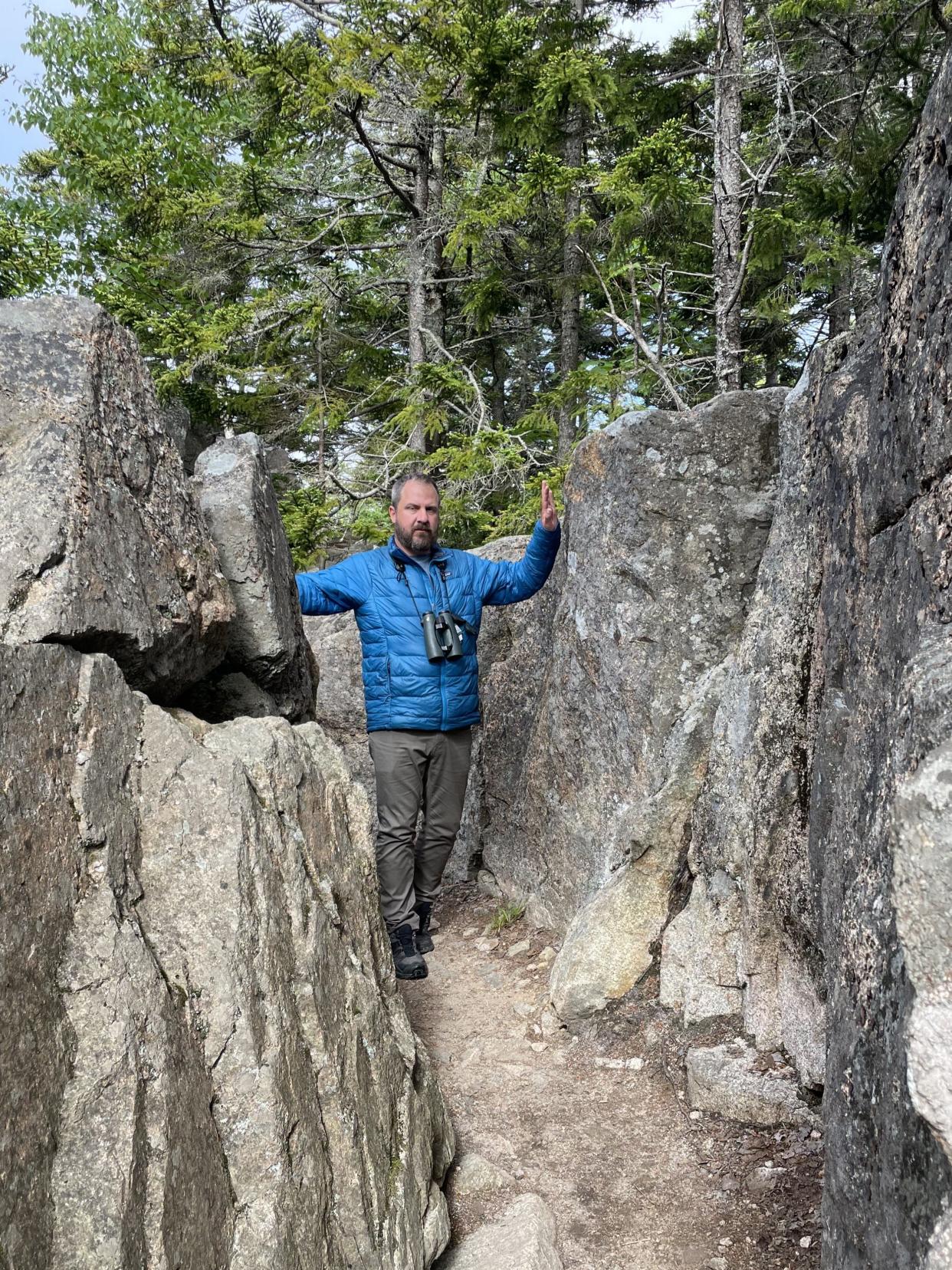
Somewhere in prairies southeast of Goshen — newly restored fields in the early 2000s where the endangered grassland bird known as Henslow’s sparrow started to appear — Drew Weber’s childhood love of birding broke open like a tiny seed that had just germinated.
It would set him on a course where, eventually, he’d oversee the evolution of the globally popular Merlin Bird ID App (merlin.allaboutbirds.org).
So popular is this free app on your cellphone that bird watchers have contributed 1,000 years — yes, years — of bird audio recordings to it from the field.
That fed refinements, making the app a super-handy tool to identify birds just from a photo or recording — even if there are “four birds calling” from trees where you can’t see them (apologies to the “12 Days of Christmas” song). The app can often separate the sounds to suggest who you’re hearing.
Handy, indeed, if you’re a bewildered beginner or even advanced bird watcher who will pitch in from the field or your feeder for this year’s Christmas Bird Count that will happen here and around the world. More on that event below.
"It’s more real to experience, and it feels more magical,” Weber says of the app, speaking from his home in Syracuse, N.Y. “The app is a very nonjudgmental companion for anyone. You can ask it 100 times, ‘What bird is that?’ It has much more patience than a person you could be birding with.”
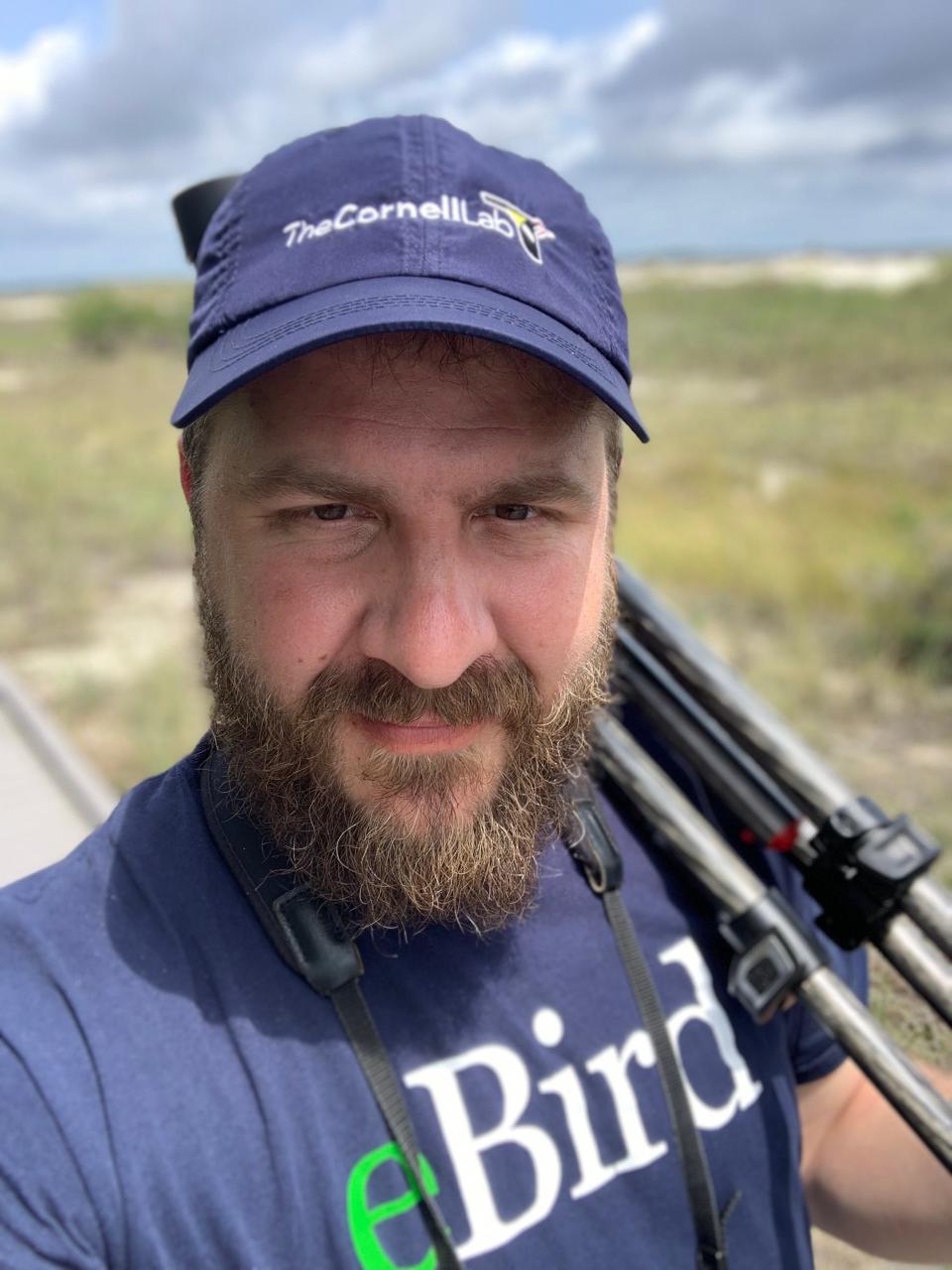
Weber was a student at Goshen College when, while seeking his bachelor’s degree in environmental studies, he did a summer of field work immersed at the college’s Merry Lea Environmental Learning Center. He helped to count and inventory the bird populations on the 1,189-acre nature sanctuary in Wolf Lake, halfway between Goshen and Fort Wayne. He looked at bird densities and how far they were from different habitats and helped with bird-banding research.
And while he was doing that, he realized, “Oh, you could do something with birds for work.”
After graduating in 2006, he delved into more bird research, like tracking the tiny northern saw-whet owls (the same species that’s banded each fall in the Indiana Dunes) through the winter in his native state of Pennsylvania.
Owl banding and October crashes: As fall bird migration delights with owls and sandhill cranes, tragedy falls on Chicago
He also got into creating bird apps. He worked with app developer David Bell, who was creating BirdsEye, the precursor to the Merlin Bird ID App.
Meanwhile, Weber pestered the Cornell Lab of Ornithology in New York about ways that it could improve its birding app. So in 2016, Cornell — whose website today is a prime go-to for bird identification and learning — turned around and offered him a job to help develop the app in-house.
Weber is the Merlin app’s project manager. He says he works with a team of skilled engineers and experts, noting, “I’m trying to bring all the people and pieces together.”
The app was launched in 2014 in a much simpler form. It grew. First birders were able to submit bird photos and get suggestions of what they could be. Starting in 2021, you could use bird recordings, too. Weber and fellow developers knew it could be popular. They just didn’t realize how much. Then again, no one expected how the pandemic would draw people to the outdoors and activities like this, including in Europe.
Worldwide, users so far have contributed roughly 1.6 billion bird observations to the app, 50 million photos and 2 million audio recordings.
The app can now identify roughly 10,000 species around the world. That’s out of more than 11,000 known species. Many of the ones that the app lacks, Weber says, are in remote corners.
The 1,200 birds that it can identify by sound are mostly in Northern, Central and South America, plus parts of India, because that’s where most of the users recorded sounds. Weber says the app needs at least 100 recordings of a specific species — in different seasons and settings — before it can be added as an identifiable bird.
Still, partners in India and Australia are using the app for conservation work, too.
The app has reached the peak of its growth, now settling into a “clean-up mode,” he says.
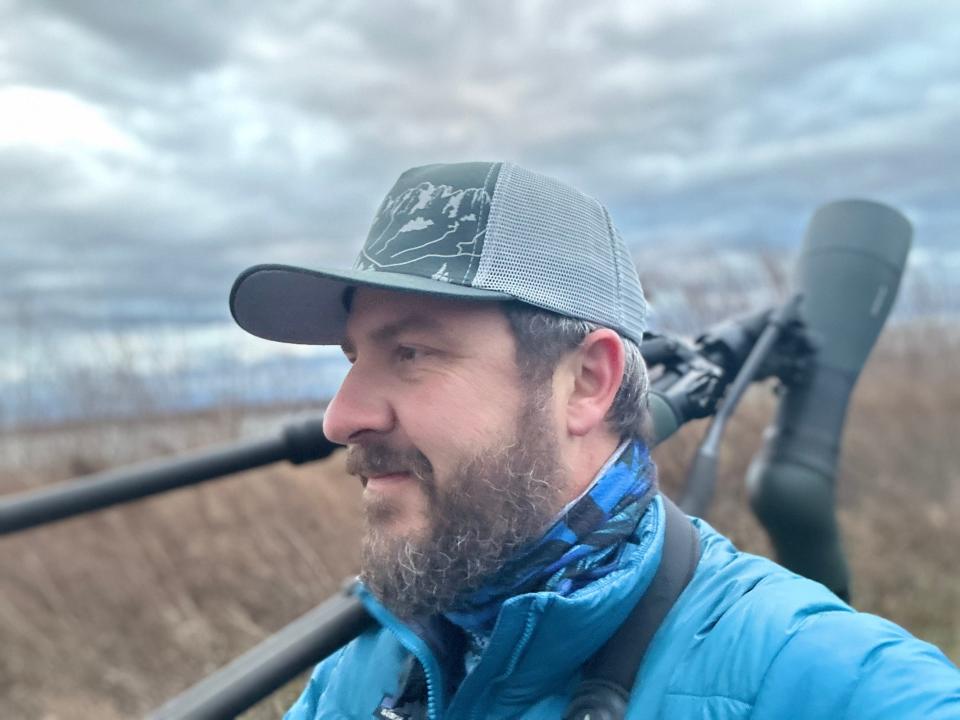
While it’s a good guide, Weber recommends that you use it as a starting point. Look up the bird identifications it gives you. Make sure they match other photos and descriptions. Cornell’s website, www.allaboutbirds.org, is a great source, but Weber also recommends Cornell’s birdsoftheworld.org.
Weber does make it back to Goshen, where he has family, and returns to favorite old birding haunts, like the city’s Fidler Pond Park, a former quarry with a 1.5-mile crushed-stone path that circles the water — good for seeing waterfowl.
Christmas Bird Counts
Now that you’ve got that groovy tool, try it out with the 124th annual Christmas Bird Count from the Audubon Society, which runs each year from Dec. 14 until Jan. 5. You’ll be among more than 72,000 volunteers across the Western Hemisphere, collecting data for an international database that researchers use to monitor the long-term health of wildlife.
You can watch your birdfeeder or step outside, anywhere around your home for, say, a half hour or periodically through the day.
Or, for more of a scavenger hunt, you can be assigned to a specific area to scan for bird species for an hour or two. Depending on the area, you may be teamed up with more experienced birders, which is a great way to learn.
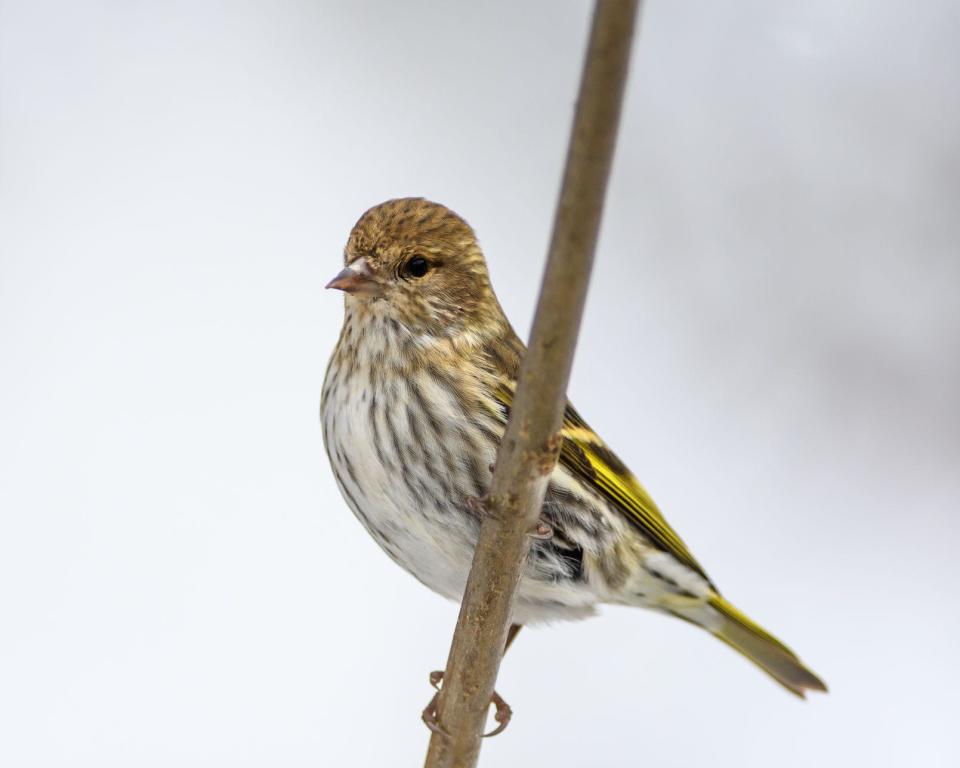
Only a bit of familiarity with bird species is required, which you can learn along the way.
Each of the local counts is on a single day covering a circle with a 7.5-mile radius. The time commitment is typically flexible. Do as little or as much as you like. Organizers will give you instructions. But first reach out to the contacts listed here.
∎ Dec. 16: South Bend. The 7.5-mile radius extends from downtown South Bend, so the coverage circle reaches Lydick, (a bit of) Osceola, just north of Lakeville and New Road and into Niles Township, just north of Bertrand Road. All ages and abilities are welcome. Register with Lindsay Grossmann at lindsay.grossmann@sbeaudubon.org or 574-807-4443.
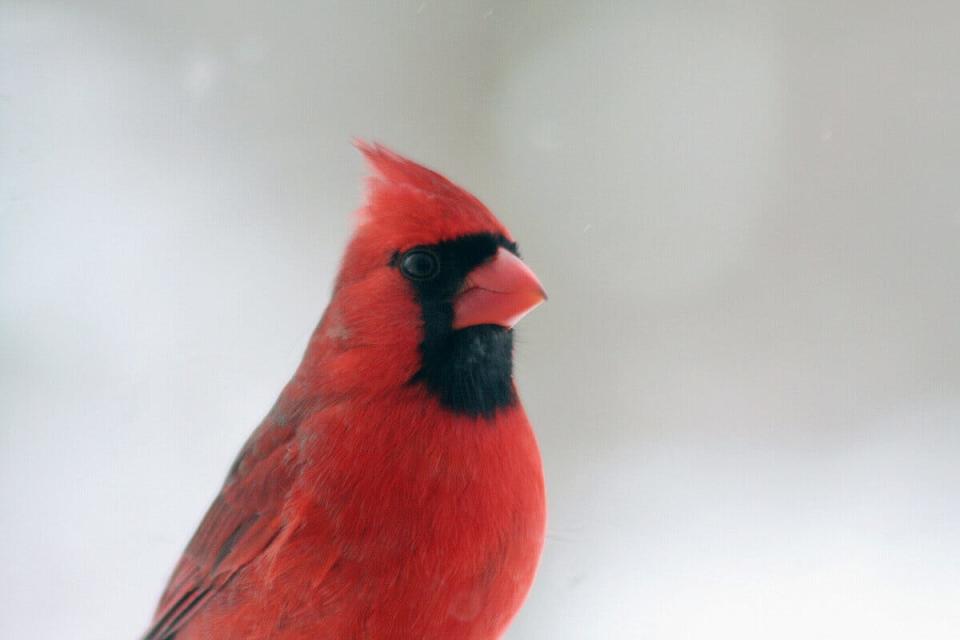
∎ Dec. 16: Bremen. Register with Neal Miller at birdmill@ibyfax.com or 574-248-1428. Volunteers in cars are especially needed because many counters will be Amish who are biking or walking.
∎ Dec. 16: Indiana Dunes State Park. Register with Kim Ehn at kimehn59@gmail.com.
∎ Dec. 17: Berrien Springs. Register with Love Creek Nature Center at 269-471-2617 or lovecreek@berriencounty.org.
∎ Dec. 17: Niles-Buchanan. Register with Rhoda Johnson at johnsonrhoda@gmail.com or 574-849-1083.
∎ Dec. 18: Dowagiac. Register with John Brenneman at jbrenneman@naturecenter.org.
∎ Dec. 19: New Buffalo. Register with Pat Underwood at 269-757-1052 or 3woods123@sbcglobal.net.
∎ Dec. 23: Indiana Dunes National Park West. Register with Christine Gerlach at Christine_gerlach@nps.gov or 219-395-1885. Contact her by Dec. 21 if you want to be assigned to a field count. Feeder counts are also welcome.
∎ Dec. 26: Topeka, Ind.: Register with Perry Miller at perrymiller@ibyfax.com or 574-642-1135. Volunteers in cars are especially needed because many counters will be Amish who are biking or walking.
∎ Dec. 30: Elkhart County. Field counters will be assigned to a specific area in Elkhart County when they meet at 7:30 a.m. in the Ox Bow House Shelter in Ox Bow County Park, 23033 County Road 45 in Dunlap, but the sections can also be assigned ahead of time. Register by 4 p.m. Dec. 29 with Ronda DeCaire at rdecaire@elkhartcounty.com or with Elkhart County Parks at 574-535-6458.
∎ Dec. 30: Coloma. Register with Mike Mahler at Sarett Nature Center at 269-927-4832 or mikem@sarett.org.
∎ Dec. 30: Oswego (seven miles northeast of Warsaw). Register with David Hicks at djhicks@manchester.edu or 260-982-2471.
2023 season: Here's your guide to holiday lights across Michiana that you can walk, drive or bike
More from the wild side
∎ Carole Riewe: You may recall Carole Riewe from The Tribune's coverage of the peregrine falcon nest in downtown South Bend, or from her work with raptor rehabilitation, or from her days as naturalist at Rum Village Park. By pure chance, I was able to visit her in recent months. She died Dec. 3, though very peacefully. Fly high, Carole. Watch for an obituary, possibly this weekend.
∎ Tons of sandhill cranes: On Nov. 28, 32,938 sandhill cranes were counted at the Jasper-Pulaski Fish & Wildlife Area that has a viewing platform in Medaryville, Ind., a peak for this season that beats last year’s top count of 31,970. The counts are done each Tuesday, linked here in this column online.
∎ Happy Owl-idays: Humane Indiana Wildlife will bring five native owls for you to meet and learn about in a talk at 1:30 p.m. CST Dec. 16 at the Indiana Dunes State Park’s nature center in Chesterton.
∎ At the feeder: Kids ages 6-9 can watch and learn about birds at the feeder from 1:30 to 3 p.m. Dec. 18 at Ox Bow County Park near Goshen, including tips for identifying them and knowing what they eat. Cost is $2. Register by Dec. 17 at elkhartcountyparks.org.
∎ Seek beavers: Join a naturalist to look for a beaver and its lodge at 5 p.m. Dec. 8 at Ox Bow County Park near Goshen. Sign up by Dec. 7 at elhartcountyparks.org.
∎ Yeti hike: Come hike from 6 to 8 p.m. Dec. 15 at St. Patrick’s County Park in South Bend to search for “glowing yetis” — those white furry, fabled walking creatures. Then warm up with hot cocoa and S’mores by a campfire. There will be a photo booth with the park’s “resident yeti.” Cost is $3. Register by Dec. 11 at 574-654-3155.
∎ Winter Wildlife: Learn the tricks that wildlife use to survive the cold winter, then warm up with hot cocoa from 10 a.m. to noon Dec. 16 at the Elkhart Environmental Center, 1717 E. Lusher Ave. This free program is for ages 8 and older. Register by Dec. 13 in a link here in the text of this column online.
Find columnist Joseph Dits on Facebook at SBTOutdoorAdventures or 574-235-6158 or jdits@sbtinfo.com.
This article originally appeared on South Bend Tribune: Goshen College alum runs Merlin Bird ID App handy Christmas Bird Count

